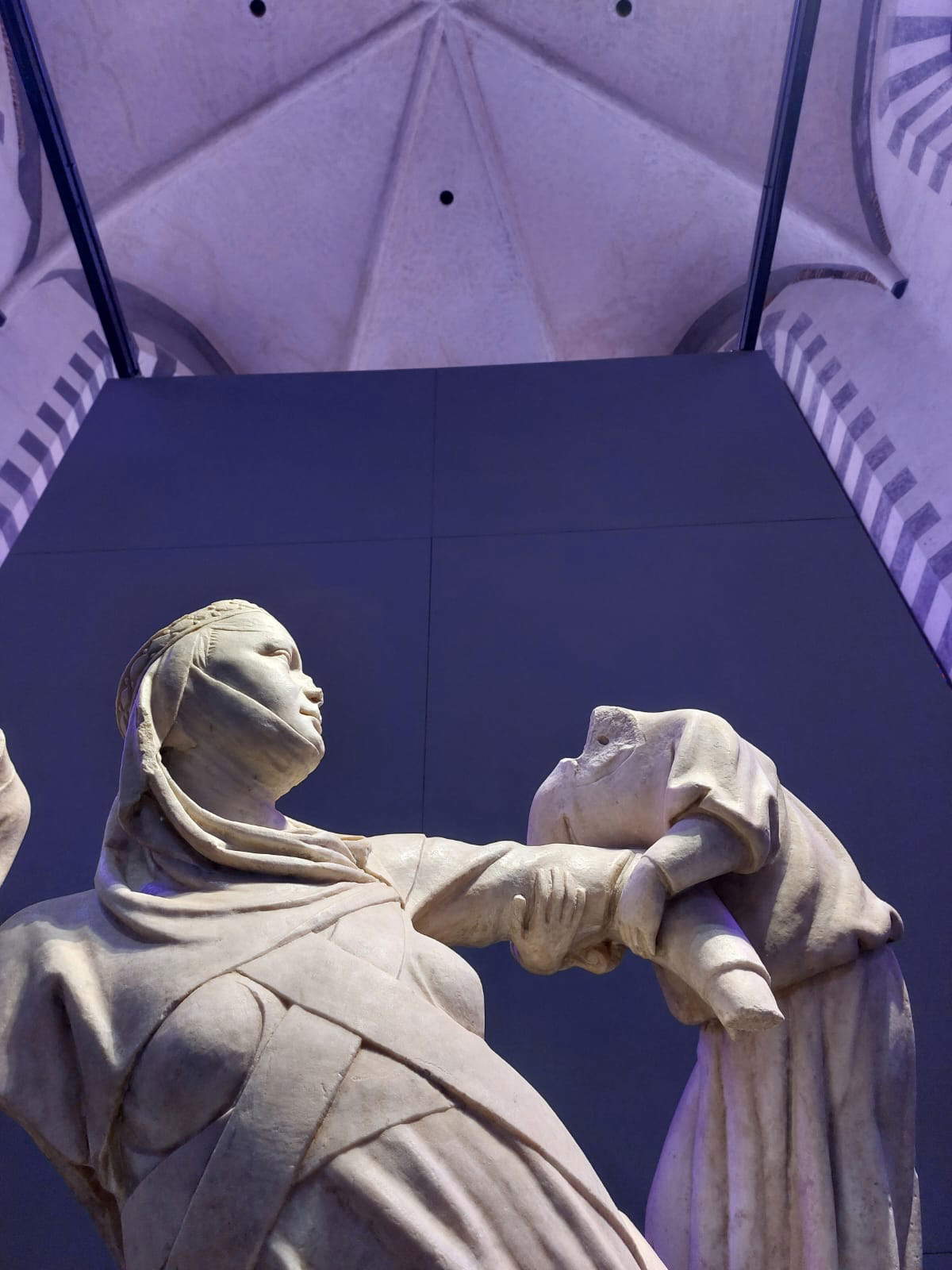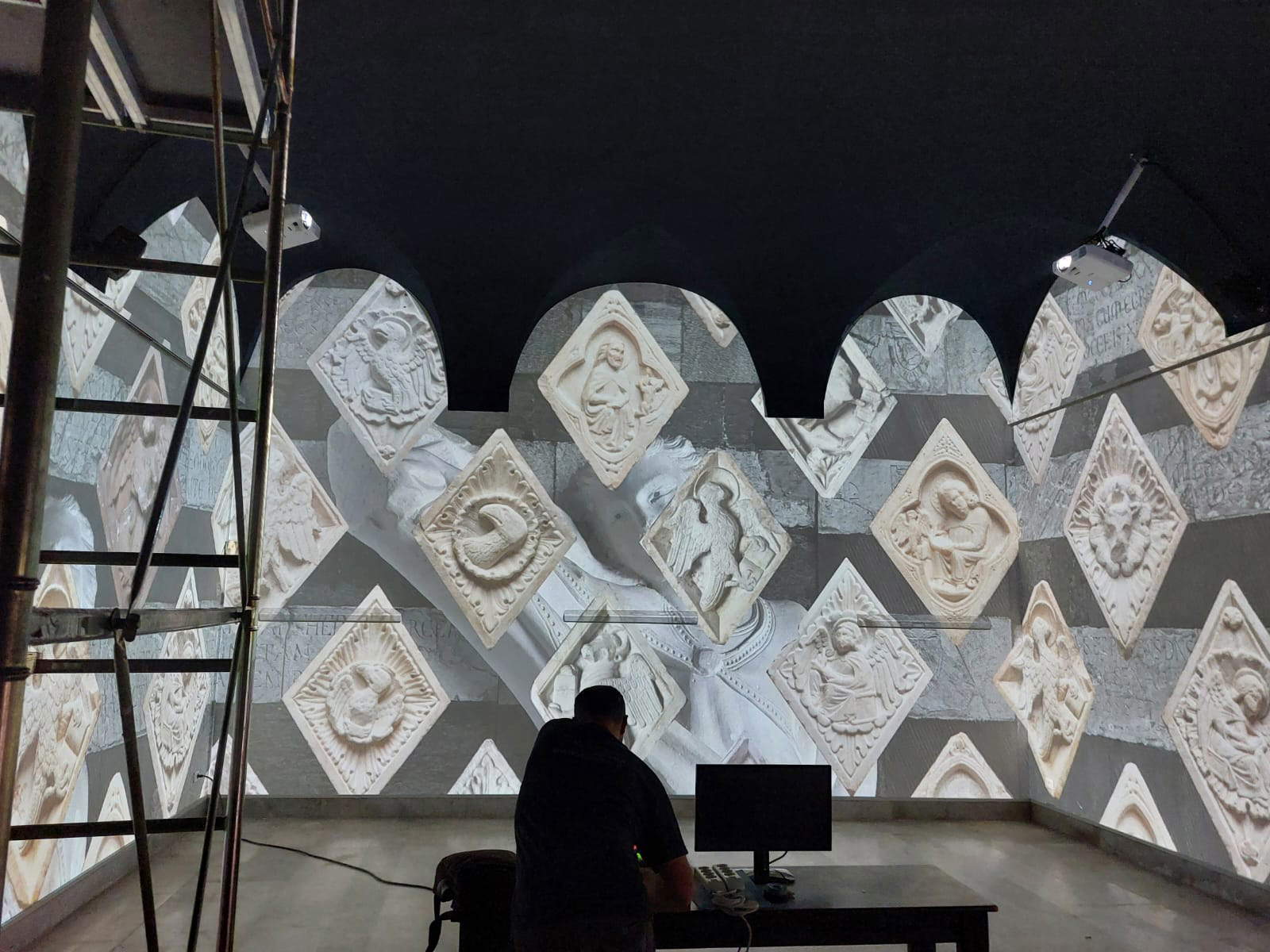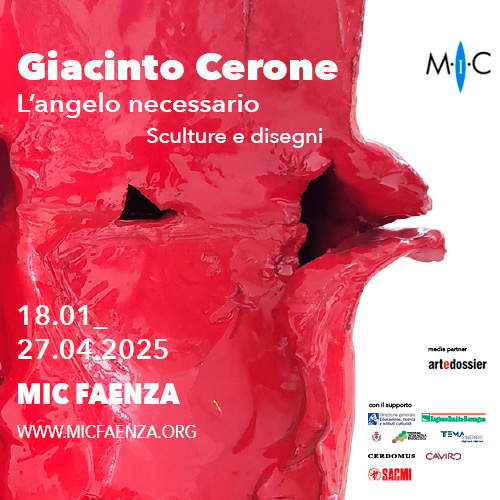Genoa, St. Augustine's Museum reopens after four years. With new exhibits
Genoa’s Museo di Sant’Agostino, which has been closed since 2020 for safety reasons due to structural criticalities on its 790 square meters of stained glass windows, all of which were in need of replacement, reopens to the public.Starting May 30, the public will be able to explore a new exhibition itinerary set up in the museum spaces and the church of Sant’Agostino, home to one of Italy’s most important medieval art museums. This exhibit, located in the medieval church, offers a selection of works from the Museum of St. Augustine, presenting a thematic itinerary illustrating the history of Genoa from the 10th to the 15th century, a period when the city became a Mediterranean power.
Genoa’s St. Augustine Museum, located in the heart of the historic center, is the largest of the city’s civic museums. This museum represents the latest architectural and museographic work designed by Franco Albini and Franca Helg, and is considered one of the greatest expressions of Italian architecture of the last century. The museum project began in the 1960s, after examining numerous variants of reconstruction and restoration of the remains of the Augustinian monastic complex, which was destroyed by bombing in World War II. The museum was opened to the public in 1982 with spaces distributed around the quadrangular cloister and completed with volumes around the triangular cloister in the immediately following years.
The former church, which is part of the complex, is one of the most complete and monumental expressions of Genoese Gothic architecture. The original design intentions envisioned the recovery of the former church as a collateral space in the museum’s visitor route. The restoration of the church, which began in 1988 without intervention on the decorative apparatus, aimed to use it as an auditorium for the Young Genoese Orchestra (GOG). However, the institution found a more suitable permanent home elsewhere, and the church was subsequently opened only for temporary events, including the memorable “Sacra Selva” in 2004. The last exhibition held in the church was in 2016.




The new layout of the Museo Sant’Agostino
The centerpiece of the exhibition is theElevatio Animae of Margaret of Brabant, a masterpiece by Giovanni Pisano created in 1313. After an eight-year restoration at the Opificio delle Pietre Dure in Florence, this sculpture returns to Genoa for the Ianua-Genoa in the Middle Ages event. The public will find theElevatio gathered together with the other fragments, preserved at the Museo di Sant’Agostino, of the grandiose sepulchral monument of Margaret, consort of Emperor Arrigo VII, who died in Genoa in 1311. The statue, made of Carrara marble, measures about five feet tall. Unfortunately, little is known about the original appearance of the monument to which it belonged: initially placed in the church of San Francesco di Castelletto, it was demolished and dispersed in the early 19th century, along with the entire church and convent complex. Only a few pieces remain of what must have been an impressive and innovative construction. However, from these emerges a new and touching conception of the tomb: the queen turns an intense gaze of hope to heaven, an expression unprecedented in art, which finds a parallel only in the verses of Dante’s “Commedia.”
In addition to these works, the exhibition includes more than a hundred artifacts from the museum’s storerooms that have never been exhibited in the past eighty years. This exhibition route also extends into the triangular cloister of the convent of St. Augustine. The scientific project was curated by the Museums Department of the City of Genoa, in collaboration with the University of Genoa and the Superintendence. The curators of the exhibition are Raffaella Besta, Paolo Persano, Clario Di Fabio and Francesca Girelli. The exhibition design was created by GTRF Giovanni Tortelli Roberto Frassoni Architetti Associati, which also supervised the master plan for the Sant’Agostino complex.
The new layout takes advantage of the Gothic architecture of the medieval church, amplifying the peculiarities of the space through an evocative and vertical arrangement of the works. The educational apparatuses are designed to guide the visitor through an ascending experience, similar to medieval “exultets.” Two “immersive” spaces welcome visitors: one virtual, offering details of medieval monuments and works, and another recreating a forest of capitals.
Work on the reopening of St. Augustine’s, which began last April, is divided into several phases. The first phase involved the former church, built in the 13th century and deconsecrated during Napoleonic laws. The second phase, scheduled by November, will cover the marble depository, with the display of sculptural and architectural fragments that have never been shown to the public. In 2025, the quadrangular cloister will be reopened after restoration of the stained-glass windows, paving, and inner garden, with architectural barrier removal and plant upgrades.
Medieval works will be rearranged right in the quadrangular cloister on the first level of the museum. On the ground floor, a new section will be dedicated to Genoa’s relationship with the East, and new visitor reception and service areas will be created, including a ticket office, bookshop and cafeteria. In addition, the Byzantine Pallium and wooden sculptures will be displayed in the triangular cloister on the first level, while the Renaissance and Baroque works will be rearranged in the quadrangular cloister on the second level of the museum. The hygrometric and climatic control system will be upgraded to ensure the preservation of the most fragile works.
The museum, from May 31 to Sept. 30, will be open to visitors on Mondays, Tuesdays, Wednesdays and Fridays from 10 a.m. to 7 p.m., Saturdays and Sundays from 10 a.m. to 7:30 p.m. Oct. 1 to Dec. 31: Mondays, Tuesdays, Wednesdays, Fridays, Saturdays and Sundays: 10 a.m. to 6:30 p.m. Closed on Thursdays. Also, in June, the Cultural Policies Department of Genoa City Council, for four successive Wednesdays - June 5, 12, 19 and 26 - is offering Medieval Caruggi (https://www.visitgenoa.it/it/caruggi-medievali), one-and-a-half-hour guided tours (from 2:30 p.m. departing from Caricamento Square) to discover the medieval architecture and motifs hidden in the city. The Caruggi Medievali route, from Palazzo San Giorgio to Sant’Agostino, travels through alleys and squares, touching on ancient aristocratic residences, old Genoese churches and monastic complexes. The tour ends at Sant’Agostino where participants can discover the new layout and the most important medieval works preserved inside.
 |
| Genoa, St. Augustine's Museum reopens after four years. With new exhibits |
Warning: the translation into English of the original Italian article was created using automatic tools. We undertake to review all articles, but we do not guarantee the total absence of inaccuracies in the translation due to the program. You can find the original by clicking on the ITA button. If you find any mistake,please contact us.





























